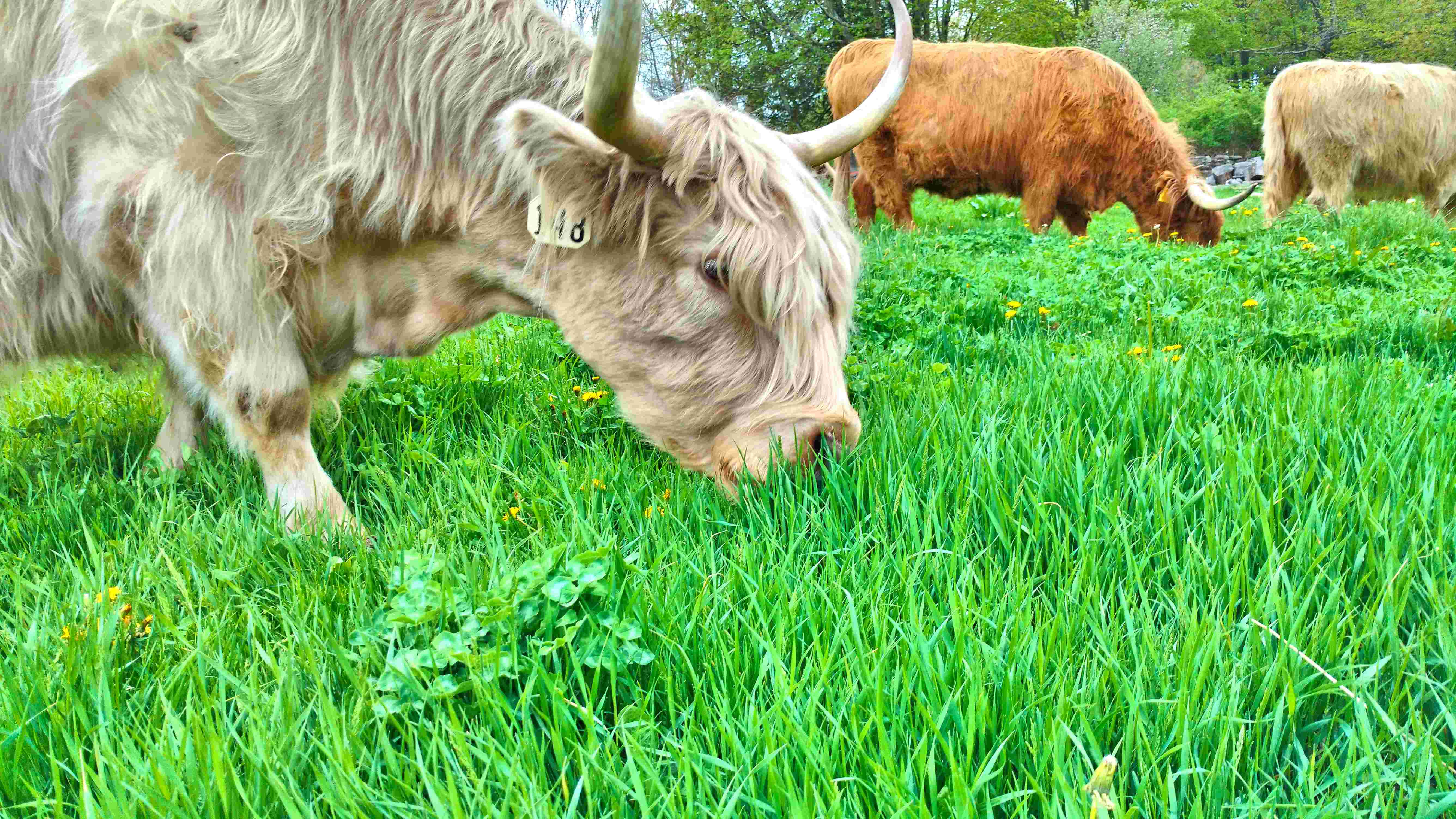Cows Are Growing, So Is the Grass
posted on
May 4, 2021

Miles Smith Farm practices rotational grazing to provide tasty grass for our cattle all summer. The grass is growing, but, so far, no calves have been born this year.
There are no births on the farm yet; we expect 12 calves, but none have arrived, and the cows keep getting bigger and bigger. By this time in 2020, five bundles of joy had arrived. This year we continue to wait. By this time in 2020, five babies had arrived. As we wait, the grass is growing, freezing weather or not. The tender green blades are yummy, much tastier than hay. It's ice cream to a cow. Within a few weeks, those blades of grass will go to seed. The stems will get "woody," and most cattle will ignore them and search out the juicy stuff.
Eating in Moderation
The trick is to get the cattle to eat the tops of the growing grass, but not eat it down to the ground. A few inches should be left so the grass can regrow another crop. If you cut your lawn too short, it turns brown and takes longer to regrow. Same thing with a pasture. You can set the height of your mower blades, but how do we tell Topper and Virginia, "Don't be greedy. Leave some grass for the next time?" Cattle cannot master the concept of eating in moderation.
So instead, we move them to another pasture and let the eaten stems regrow. The technical term is "rotational grazing," and when done correctly, it can provide luscious green feed for a herd all summer.
Eating Out
We don't have enough pasture to rotationally graze our entire herd here, so we lease fields elsewhere. Two favorite remote pastures are in Canterbury, and a third is the St. Paul's School pasture next to the Audubon Society in Concord. Some of our cattle are already munching away in Canterbury, and soon steers Galen and Cooper, and Ferdinand the bull will be at the Audubon pasture.
Calf Behavior
The pregnant cows will stay home in case they need birthing assistance. After birth, we make sure the calf is healthy and nursing. Some babies don't naturally take to nursing and need human assistance. Last year, we bottle-fed Tonto, a bull calf, until he was strong enough to nurse on his own. Others, like Moonlight, a heifer calf, latched on and drained her mother's udder in minutes. Each calf is different, so we monitor each one.
Waiting for Calves
By the time this column is published, you might have heard me shout for joy if a 2021 calf is born. And if you hike the Audubon trails, keep an eye out for “the boys" munching away on those tender shoots. If I were an artist wanting to paint a picture of contentment, that's where I'd set up my easel.


